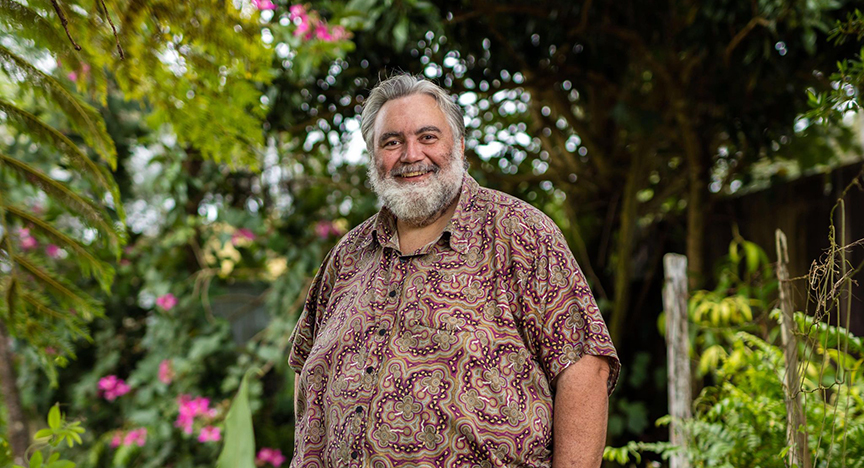
The day job of Dr Louis Peachey is an anaesthetist at Atherton Hospital.
But the Girrimay man from the Djirribaligan language group (Rainforest People) of North Queensland has a passion and influence far beyond this, as an advocate for the careers of Indigenous doctors, a mentor and inspiration for countless medical staff, and an authority on rural and remote medicine.
His projects and achievements make a lengthy list, the top of which would be his prestigious Life Fellowship award with the Australian College of Rural and Remote Medicine in 2021.
‘When I went through school, the concept that Aboriginal people could achieve anything was non-existent.’
In 1984, the University of Newcastle had embarked on a plan to train Indigenous Australians. At the time, the first and only practising Aboriginal doctor in Australia was Prof Helen Milroy.
Dr Peachey had just turned 18 when he was told about the opportunity.
‘I had no idea what I was saying yes to,’ he said.
‘The really odd thing about medical school was it was clearly the whitest institution I had come across in my life. The people who looked after me were 90% a cadre of old, white men who owed me nothing and gave me everything. My only responsibility was to show respect and learn at the feet of these great men.’
After graduating from medical school, Dr Peachey’s career took him throughout Australia, crossing waters to work in New Zealand. He trained to become a Rural Generalist in Toowoomba, and extended his studies to anaesthesia in Adelaide.
Dr Peachey helped to create the Australian Indigenous Doctors Association (AIDA) of which he was founding president and has ongoing involvement.
‘When I began my journey at medical school, there was one Indigenous Australian doctor,’ Dr Peachey said. ‘There was nobody from our culture who could give us guidance. The faculty was full of beautiful, genuine, caring people but they saw the world differently.
‘When we created AIDA in 1997, there were 25 Indigenous Australian doctors, and now there are more than 600.’
There were numerous benefits to the establishment of AIDA, namely providing a supportive, inspiring, safe space for First Peoples students, which would only lead to improved health outcomes for First Peoples patients.
Dr Peachey’s work with AIDA ties in closely with another passion of his - regional, rural and remote healthcare. As a former Australian College of Rural and Remote Medicine Board member, he has encouraged other medical professionals to take up the call to work remotely.
‘The right training and experience can make a real impact on the lives of those in regional, rural and remote communities,’ he said. ‘Rural generalists, local GPs, nurses, and other rural health professionals are vital when things go wrong in the bush.
‘Rural communities suffer poorer health outcomes than their city counterparts but have less access to health care. They need high quality, affordable healthcare as close to home as possible. That means training local GPs and rural generalists, as well as other medical specialists who are attracted to regional and remote work and lifestyle.’
In 2009, the call of country was too great. Dr Peachey moved his wife and two girls to Far North Queensland, where Dr Peachey took up his current role at Atherton Hospital.
While based at Atherton, he also serves as the Senior Medical Officer at the nearby Lotus Glen Correctional Facility, where he holds a fortnightly clinic for inmates. He says about 75 per cent of clinic attendees are First Peoples inmates.
In receiving his Life Fellowship award, Dr Peachey was described as an ‘amazing, committed and dedicated legend’ of the Australian College of Rural and Remote Medicine, who ‘epitomises the inspirational model of rural generalism’ the College was founded on.
The award is reserved for individuals who have rendered ‘outstanding and meritorious service to the College and made a contribution of international significance to rural and remote medicine’.
‘I didn’t comprehend it. I knew I was getting an award then I realised oh my God (it was the Life Fellowship). I rang someone from the college and said ‘are you sure? Are you really sure? I could think of a dozen people who deserve this’.’
Perhaps his greatest achievement is that of his two girls.
‘My big girl just graduated veterinary medicine and my baby is in the fourth of five years studying medicine. Next Christmas we will have three doctor Peachey’s sitting at the table.’